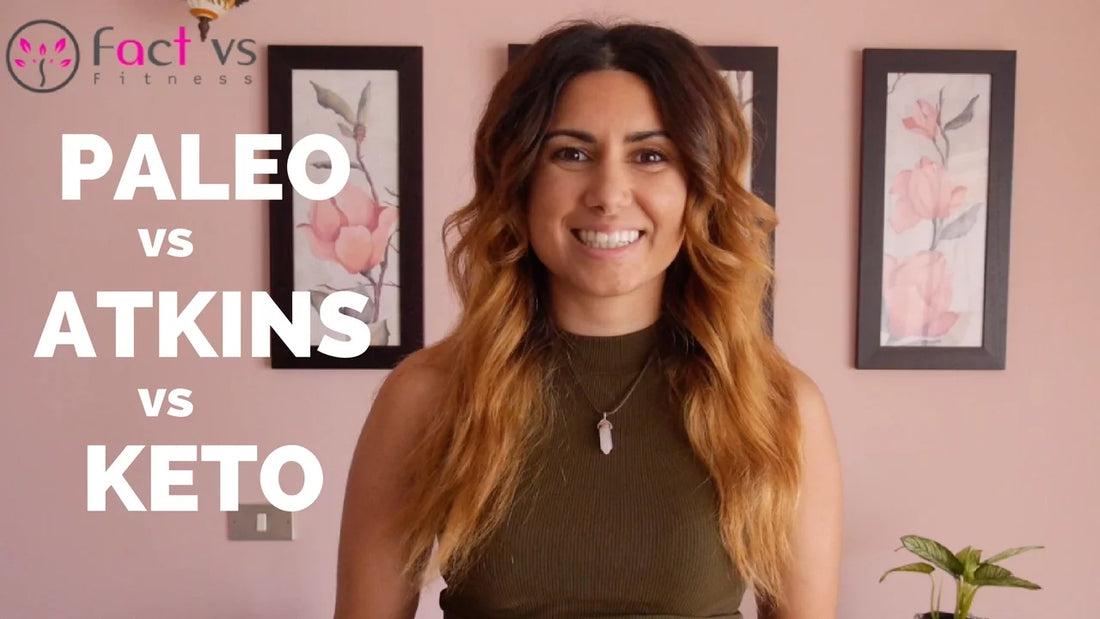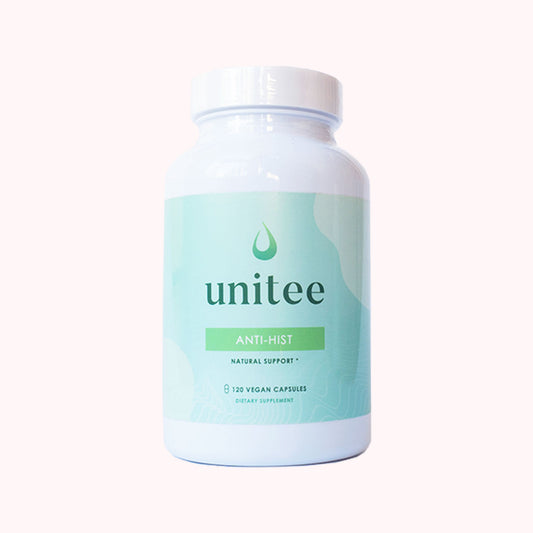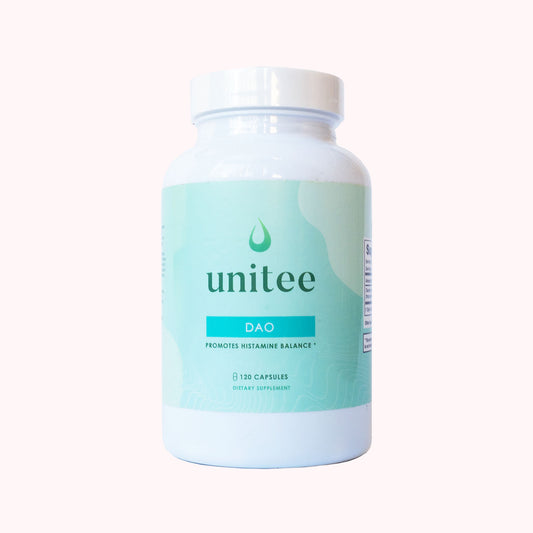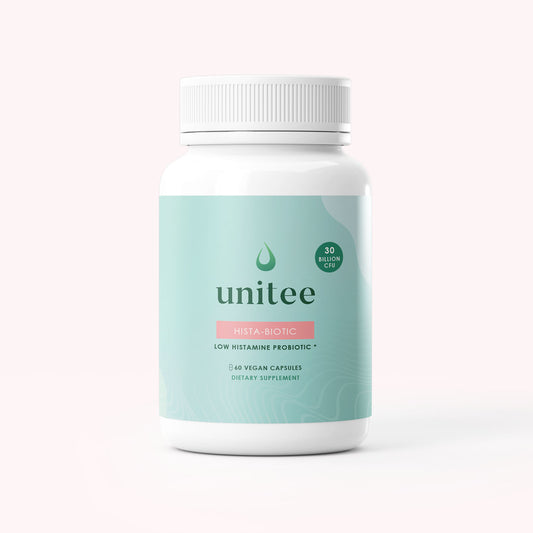Paleo, Atkins, Ketogenic… what the heck is the difference!?
The Paleo diet, Atkins diet and ketogenic diet have a lot of overlap - in fact, you can actually be on all three of these diets at once.
This overlap makes the three diets very easy to confuse and, it can make your decision on which diet is best for your goals a little bit tough.
Now, since I first wrote this post the popularity of the Atkins diet has fallen - however, many of you may still be on a paleo or ketogenic diet and looking to do so to improve your health in a variety of ways.
I've updated this to include relevant information however, it's important to note that a huge reason why people swap over to a paleo diet or ketogenic diet is because they're not feeling totally well and are looking to feel better.
The paleo diet or ketogenic diet are often a first stepping stone to what could be a solution or, could be a deep dive into a world of trying new diets to find out which one makes you feel best.
Here at Fact vs Fitness we're all about improving food intolerances and so, if these diets are not making you feel better, I do recommend trying a low histamine diet which is essentially a diet that reduces histamine, which is a compound that is part of the immune system and can cause allergy like symptoms and inflammation.
If you're wondering if your symptoms fall under the category of who should be trying a low histamine diet, you can have a look at this list of 47 histamine intolerance symptoms and you can click below to get my free low histamine diet guide, which typically improves symptoms while reducing inflammation through eating all-natural, low histamine foods.
Now, back to our original clarification: paleo diet vs Atkins diet vs ketogenic diet!
As always, you’ve got a scientist on your side and, today, I’m going to clear up the main difference. I'll also introduce you to the basics of a low histamine diet and explain why this may be relevant in your search to feel better!
Let’s get started!
Paleo vs Atkins vs Ketogenic Diet: a Comparison
Ketogenic Diet
To start off, I’d like to explain to you guys a bit about a biological state called nutritional ketosis. Pay attention, because this is a pretty important concept that may be a major factor in your dietary decision.
Nutritional ketosis is a biological state in which your body begins using fats, rather than glucose, as it’s main fuel source. In order for fats to be used as fuel, they are converted into ketone bodies, which is the basic goal of the ketogenic diet.
Although more complex, cyclical ketogenic diets exist, in which you are cycling in and out of ketosis, with the basic ketogenic diet your body is in a constant state of nutritional ketosis.
In order to enter into nutritional ketosis, you must drastically restrict your glucose supply, while concurrently increasing fat consumption so that your body is essentially forced into burning fat as fuel. Your macro breakdown should look something like 60-80% fat, 5% carbohydrates and the remainder as protein.
As 1g carbohydrate is equivalent to approximately 4 calories, a 5% carbohydrate intake would equate to approximately 25g carbs daily for someone on a 2000 calorie per day diet.
Keep in mind, these numbers are approximations and each person will enter ketosis at slightly different values, depending on biological and lifestyle factors.
At first, while your body is still relying on the glucose hits you’re used to, you may experience some poor feelings such as low energy - but don’t worry, it’s about to get so good.
Burning ketone bodies as opposed to glucose as your main fuel source is accompanied by a vast array of biological benefits including enhanced cognitive functioning, stabilized energy and easier maintenance of ideal body composition. It can basically turn you into a superhuman.
As I mentioned, both the Paleo and Atkins diet can overlap with the ketogenic diet. What I mean by this is that you can be following the rules of the Paleo diet or Atkins diet and still be consuming enough fat to push your body into nutritional ketosis.
However, being in a ketogenic state is not necessary under the rules of the Paleo and Atkins diet and, you could certainly be on either of the latter two diets while still burning glucose as your primary fuel source.
What I’m getting at is, the main difference lies within the allowance for carbohydrate intake.
So, to reiterate the essential principle of the ketogenic diet is to use ketone bodies rather than glucose as your main fuel source, which is not an essential part of the Paleo or Atkins diets.
Let’s move on.
Atkins Diet
Once again, this diet has really dropped in popularity over the last years, but for the sake of it being in the category of a low carbohydrate diet (with a brand slapped on it), I'm going to explain how it works anyway.
The Atkins diet has a few phases and, in the first phase, your daily carbohydrate allowance is as low as 20g carbohydrates per day. This low intake means that, depending on how long you stay in the first phase, you may actually enter into a state of ketosis during this phase and simultaneously end up on both diets for a temporary period.
However, by the end of the Atkins diet, your daily carb allowance moves up to 100g daily for maintenance, which is much too high for the average person to remain in a consistent state of ketosis.
One of the pitfalls of this, however, is that if your body is not in a state of ketosis and is still relying on glucose as a main fuel source, then restricting glucose intake may result in feelings of lethargy, reduced cognitive functioning and general un-wellness depending on your biological needs.
Although there are still some pretty amazing benefits to being on a low carb diet which you can definitely experience during the maintenance phase of the Atkins diet, it’s important to remember that, whatever fuel your body is working with, you’ve got to give it enough to meet your energy requirements.
Another interesting thing to note here is that a lot of people with digestive issues such as irritable bowel syndrome (IBS) tend to feel better on a low carbohydrate diet. This especially applies to those with small intestinal bacterial overgrowth (SIBO) which also is generally used to refer to intestinal methanogen overgrowth (IMO) - even though they're technically not the same.
The reason for this is because bacteria do feed on sugar and carbohydrates so if you have an overgrowth of bad bacteria or methanogens (which are technically archaea) then eating plenty of carbs can produce gas. In this case, a carbohydrate reduction can actually be tied to improved digestive symptoms and a low carb diet (or Atkins diet, in this reference) can make people feel better in that sense.
Paleo Diet
The Paleo diet is the most generous of these three diets regarding carbohydrate intake. On the Paleo diet, you can consume up to 150g carbohydrates daily, depending on what your personal goals are.
For example, athletes may choose to consume a much higher amount than this, whereas someone aiming for weight loss might choose to consume less carbs.
Additionally, the Paleo diet encourages the consumption of certain fruits and vegetables that would not be primarily recommended on the ketogenic or Atkins diet due to carbohydrate content.
The basic principle of the Paleo diet is simply to eat foods that are natural, and that our ancestors likely consumed. Therefore, as long as you can find it in nature, most foods are A-okay.
Due to the generous carbohydrate allowance and vast array of allowed foods, I personally find the Paleo diet to be the easiest of the 3 to follow.

Low Histamine Diet
Lastly, I'm going to mention a low histamine diet which can be applicable for those with inflammatory issues, gut issues such as IBS, SIBO or IMO and, specifically, those experiencing allergy-like symptoms or strange inexplicable feelings of illness such as those listed in this symptoms of histamine intolerance list.
The reason I think this is so important is because of how many people seek restrictive diets to feel better, but don't actually end up eliminating the offending compounds.
Histamine intolerance is becoming increasingly common but most people have never even heard of it - so, if you have any of the symptoms on the list above, consider this a huge tip off in the right direction.
A low histamine diet drastically reduces the amount of histamine you are consuming. Histamine is a compound released by the immune system but is also ingested through food and environmental exposures.
Root causes of histamine intolerance can include genetic deficiencies, bacterial imbalances, immune conditions and more.
The good thing is that, if you're unsure if this applies to you, you can try a low histamine diet at home and, if you are indeed histamine intolerant, you should see a noticeable improvement in symptoms within the first 1-2 weeks. This improvement is your first clue that you're on the right path to figuring out what's causing your symptoms! Click below to get a free diet guide to try it out yourself.
Choosing Which Diet is Best for You
In order to select the diet that’s best for you, you’re going to want to consider the following 3 factors:
1. Health Goals
The first thing to do is ask yourself what are your health goals.
If you’re seeking a diet not because of health conditions but rather aiming for fast weight loss, perhaps Atkins will be the right fit for now. If you’re aiming for enhanced cognitive functioning and stabilized energy, the ketogenic diet might be more your style. And, if you’re aiming to simply boost your health and body composition without being overly strict, the Paleo diet could be your best fit.
On the other hand, if you're feeling unwell and experiencing symptoms of histamine intolerance, then of course giving the low histamine diet a whirl for a couple of weeks is going to be your best bet.
In my opinion as a scientist, if you’re going to be pushing your body into a low-carb state, the ketogenic diet is pretty unbeatable in terms of biological benefits - however, it is incredibly difficult to sustain if you have a social life.
I previously tested the ketogenic diet and during, I noticed dramatically increased focus and productivity and, being the scientist that I am, I monitored numerous biological markers and experienced drastically improved health status, even for problems that I wasn’t centrally focussed on. But, I also had a very challenging and limited social life due to this and, in the long term, I would say it had a negative impact on my mental health.
Not to say that's applicable for everyone - some people can stick to these things without feeling so restricted or experiencing much change in their life - however, it really depends on your personality and previous eating habits and we'll get into that below.
2. Personal Preference & Sustainability
The next thing to consider is how sustainable do you consider each of these diets to be.
As I mentioned, although I experienced amazing benefits on the ketogenic diet, I always felt restricted and also felt that sticking to a strict diet while socializing was difficult.
That was my personal experience - however, some people can go years doing the ketogenic diet without any feelings of restriction.
Keep in mind that if you’re constantly feeling restricted and stressed over your diet, this is going to be negative for your mental health, stress hormones and therefore, your overall well-being.
Your diet should be enjoyable and sustainable, and certainly not stressful.
Once again, the least restrictive here is the paleo diet and, after that, the low histamine diet. The Atkins diet (depending on the phase) and ketogenic diets can be really strict, even though Atkins does loosen up at the end.
3. Dietary Personalization
Now that you’ve combined your health goals with a diet that you find sustainable, the final factor is considering dietary personalization.
What this means is that, even though one diet may be considered scientifically beneficial, or has worked great for one of your friends, the fact is that every person’s biology is so individual, and different diets will work for different people.
So, when testing out your selected diet, be sure to pay attention to how your body is feeling. Sure, your body will take time to adjust to any new diet and you may not feel perfect during this period (especially if it’s your first time trying out the ketogenic diet) but, if after several weeks your body is not thriving on your new diet, it may be time to quit.
Keep this factor in mind, as many people push themselves through diets they are clearly not thriving on, simply because that diet has worked for other people. You and your biology are UNIQUE!
The bottom line is, do what’s right for you. Sometimes, what’s considered the “best” diet by science, isn’t necessarily the best diet for every single case. You are with yourself 24/7, so you know your body better than anyone, you just have to listen closely to find the answers!
Put your health in nature's hands.
Anita Tee, Nutritional Scientist

Anita Tee
My name is Anita Tee. I'm a nutritional scientist who specializes in histamine intolerance. I hold a Master of Science in Personalized Nutrition and a Bachelor of Science in Human Biology and Psychology.For the past ten years, I have used my experience in nutritional and medical health sciences to create a scientifically backed, natural approach to healthcare that relies 100% on evidence-based research.As I previously suffered from - and overcame - histamine intolerance, my focus is to increase recognition and expand the available resources and protocols available for resolving this particular disorder. To date, I have helped over 4,000 individuals fully resolve or better manage their histamine intolerance symptoms.







